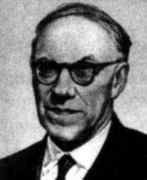◀ ▲ ▶History / 20th-century / Person: Lavrentev, Mikhail Alekseevich
Person: Lavrentev, Mikhail Alekseevich

Mikhail Lavrent'ev is remembered for an outstanding book on conformal mappings and he made many important contributions to that topic.
Mathematical Profile (Excerpt):
- These are most commonly Lavrent'ev, Lavrentev, Lavrentieff, Lavrentiev, Lavrentyev or Lavrentjev.
- It was during this trip to Göttingen that Aleksii Mikhailovich met another Russian, Nikolai Nikolaevich Luzin, who was studying there with Edmund Landau.
- Aleksii Mikhailovich and Nikolai Nikolaevich became good friends and, after returning to Russia, Luzin often visited the Lavrent'ev home in Kazan.
- Luzin had a very strong influence on Aleksii Mikhailovich's young son.
- At this stage in his studies, it was chemistry that interested Lavrent'ev most.
- When his parents returned and saw the damage to their home they told Lavrent'ev that he had to give up chemistry.
- After arriving in Moscow, in addition to his studies, Lavrent'ev taught mathematics at Moscow Higher Technical School.
- At this stage in his career, Lavrent'ev stopped his research in set theory and topology, moving towards the theory of complex variables.
- The year 1929 was one of great importance for Lavrent'ev.
- Also in 1929 he was invited by Sergei Alekseevich Chaplygin to accept the post of senior engineer at the Zhukovsky Central Institute of Fluid Dynamics.
- This Institute, set up by Nikolai Egorovich Zhukovsky and Sergei Alekseevich Chaplygin in 1918, provided a remarkable research environment.
- It was, at this time, directed by Chaplygin (Zhukovsky had died several years before) and Lavrent'ev became one of the leading scientists at the Institute.
- Lavrent'ev gave excellent examples of practical application of theoretical solutions.
- Mstislav Vsevolodovich Keldysh had been a student of Lavrent'ev's at Moscow State University and, after he graduated in 1931, Lavrent'ev recommended that he be appointed to the Zhukovsky Central Institute of Fluid Dynamics.
- Keldysh and Lavrent'ev produced several important joint papers as indicated in the quotation above.
- Lavrent'ev was appointed as a professor at Moscow State University in 1931 and from 1933 he held the chair of the Theory of Functions of a Complex Variable at the Steklov Institute of Mathematics of the USSR Academy of Sciences.
- In 1932 Lavrent'ev's son, Mikhail Mikhailovich Lavrent'ev, was born in Moscow.
- Mikhail Mikhailovich's son, Mikhail Mikhailovich Jr, was born in 1956.
- From 1939 to 1941 and then again from 1944 to 1949, Mikhail Alekseevich Lavrent'ev was the Director of the Institute of Mathematics of the Ukrainian Academy of Sciences in Kiev.
- In 1945 Lavrent'ev was also appointed vice-president of the Ukrainian Academy of Sciences.
- Second, the scientific activity of Lavrent'ev had a considerable influence on the development of mathematics and mechanics in the Ukraine.
- The scientific work carried out at the Institute of Mathematics of the Ukrainian Academy of Sciences under the guidance of Lavrent'ev was aimed at the solution of not only fundamental theoretical problems but also numerous important applied problems.
- A great merit of Lavrent'ev lies in the fact that he resolutely directed the theoretical investigations at the Institute of Mathematics of the Ukrainian Academy of Sciences towards the solution of the urgent problems of national economy.
- Lavrent'ev's Kiev period has a break from 1941 to 1944 which, of course, coincides with the period in which the Soviet Union was at war with Germany.
- The Molotov-Ribbentrop non-aggression pact between Germany and the Soviet Union meant that the initial years of the war had little effect on life in Kiev and Lavrent'ev continued his work there.
- Lavrent'ev, along with several other leading scientists, approached the government with a proposal to undertake scientific research directly related to the development of military equipment.
- One of the projects Lavrent'ev worked on was the creation of a silencer for a gun.
- By the end of 1943 Soviet troops had liberated Kiev and in the following year Lavrent'ev returned to the city when the Ukrainian Academy of Sciences returned.
- Lavrent'ev moved to Novosibirsk when he was vice-president of the USSR Academy of Sciences between 1957 and 1975.
- Then, in 1975, Lavrent'ev returned to Moscow where he worked at the Institute of Physics and Technology until his death.
- We have already indicated some of the areas on which Lavrent'ev worked but we now summarise his contributions.
- The 1940s was a period of industrialisation and construction and, after 1945, Lavrent'ev founded new areas of research in mechanics and applied physics which were aimed at laying the theoretical foundation necessary for the large construction projects of building dams, canals and bridges on the Volga, Dnieper and Don rivers.
- Many international honours were given to Lavrent'ev in addition to those mentioned above.
- For example, the Institute of Hydrodynamics of the Siberian Division of the USSR Academy of Sciences which Lavrent'ev founded was named after him in 1980.
- Although he died in Moscow, Lavrent'ev was buried in the Cherbuzinskom cemetry in Novosibirsk.
Born 19 November 1900, Kazan, Russia. Died 15 October 1980, Moscow, Russia.
View full biography at MacTutor
Tags relevant for this person:
Origin Russia
Thank you to the contributors under CC BY-SA 4.0! 

- Github:
-

- non-Github:
- @J-J-O'Connor
- @E-F-Robertson
References
Adapted from other CC BY-SA 4.0 Sources:
- O’Connor, John J; Robertson, Edmund F: MacTutor History of Mathematics Archive
